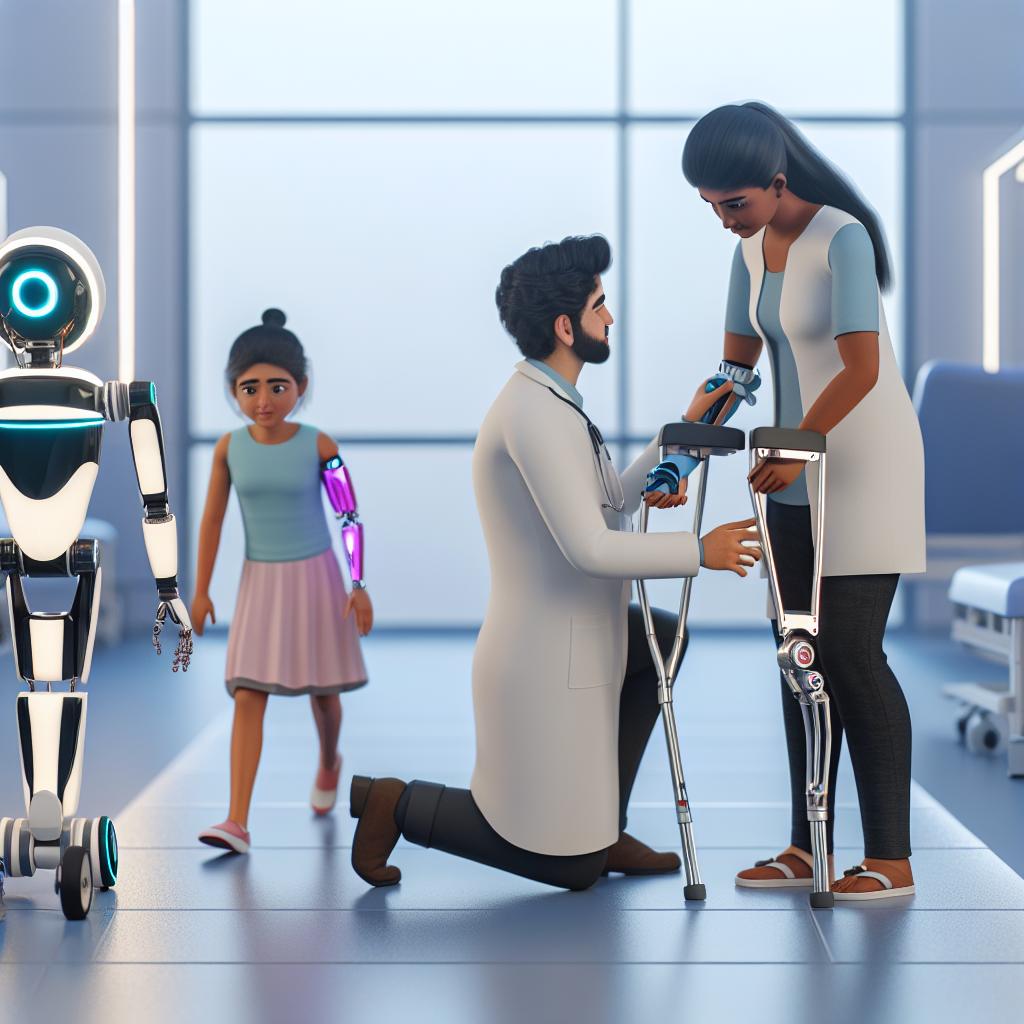The Role of Robotics in Modern Assistive Devices
In recent years, advances in robotics have significantly transformed the field of assistive devices, offering enhanced autonomy and quality of life to individuals with disabilities. The integration of sophisticated robotic technologies in assistive devices has not only improved functionality but has also expanded the scope of assistance available to users. This document provides an in-depth exploration of the impact and expansion of robotics in this essential field.
Enhancements in Mobility
Robotic technology is at the forefront of revolutionizing mobility devices. Modern robotic wheelchairs, for instance, are equipped with cutting-edge sensors and artificial intelligence, enabling them to navigate through complex environments independently. These intelligent wheelchairs can adapt to various terrains and avoid obstacles, offering users greater independence and confidence in maneuvering through different physical settings. The advancement in sensor technology allows these devices to detect obstacles, calculate alternative routes, and ensure safe passage through crowded or unfamiliar environments without the constant supervision or assistance of a caregiver or family member.
In addition to intelligent wheelchairs, devices like exoskeletons represent another innovation in mobility enhancement, providing individuals with lower-limb disabilities the ability to stand and walk. Exoskeletons leverage the principles of bio-mechanics and robotics to support or augment the user’s movement. By mimicking the motion capabilities of human limbs, these devices enable users to engage in activities that were previously inaccessible, facilitating improved social interaction and participation in daily life activities. Their role in rehabilitation is significant as well, providing support in physical therapy settings to help patients regain strength and mobility after injuries or surgeries.
Innovations in Communication Aids
Robotics has made a significant impact on communication aids, especially for individuals with speech impairments. Advanced speech-generating devices now incorporate natural language processing and machine learning algorithms, enhancing the speed and accuracy of communication. These devices can be customized to align with the user’s unique speech patterns, significantly reducing the learning curve required to operate them and making communication more intuitive. Through continuous learning from user interactions, these devices can predict words and phrases, thus speeding up communication and making conversations more fluid. Important technological improvements like voice synthesis and speech recognition have refined the realism and responsiveness of artificial speech.
Moreover, sophisticated communication aids with robotic components can integrate with various platforms, such as computers or smartphones, expanding the user’s ability to connect with others through voice, text, or alternative communication methods. For individuals who find speech production challenging, such connectivity beyond traditional vocal communication offers a critical link that helps maintain personal and professional relationships.
Assistive Robotics for Daily Living
For many individuals, carrying out daily tasks poses a considerable challenge. Robotic assistive devices, such as robotic arms, are being developed to aid with tasks like cooking, cleaning, and personal care. These robotic solutions are increasingly capable of mimicking human motion, offering precise assistance tailored to the user’s needs. Robotics engineers design these devices to mimic human dexterity and strength, allowing users to perform complex tasks that require fine motor skills and coordination that they might not otherwise accomplish independently.
Robotic arms and similar devices are designed to be adaptable and programmable, meaning that they can learn and adjust to the specific demands of each user. This adaptability ensures that the support provided is relevant and effective for the individual’s daily life activities, thereby improving their overall quality of life. By using robotic aids for routine tasks, individuals can achieve greater autonomy, allowing them to engage in more meaningful activities and reducing dependency on caregivers. This independence fosters a sense of self-reliance and improves mental well-being.
Advancements in Sensory Aids
Robotics is also making substantial strides in the development of sensory aids, particularly for individuals with impaired vision. Robotic vision systems that combine cameras and sophisticated sensors have been incorporated into wearable devices to aid navigation and object recognition. These systems utilize real-time image processing to detect obstacles and identify pathways, significantly enhancing the user’s spatial awareness and safety. By converting visual information into audio or haptic feedback, these technologies provide alternative ways to perceive the environment, thus enhancing the mobility and confidence of visually impaired users.
Furthermore, sensory aids enable interaction with the surrounding environment by using notifications and alerts to signal changes or potential hazards, such as a change in pathway elevation or nearby moving objects. This innovation has a profound impact on the ability of people with sensory impairments to pursue their daily activities safely and independently. Continuous improvements in sensor technology and machine learning are expected to refine these systems further, improving their accuracy and reliability.
The Future of Robotics in Assistive Technology
As robotics technology continues to evolve, so too do its applications in assistive devices. Researchers are exploring areas like brain-computer interfaces, which could revolutionize how individuals interact with their assistive devices. Such interfaces could allow for direct control of devices via neural signals, eliminating the need for manual operation. This technology holds great promise for individuals with severe mobility impairments, potentially enabling more intuitive and effortless control of their assistive tools.
Furthermore, the integration of the Internet of Things (IoT) in assistive robotics is likely to enhance connectivity and accessibility, providing users with a more seamless experience. IoT-enabled devices can communicate with each other and with other household or personal gadgets to create a connected ecosystem, simplifying control and operation. For instance, smart home systems integrated with assistive devices could allow users to control various aspects of their home environment, such as lighting, heating, and security, from their mobility or communication aids.
In conclusion, robotics is playing a crucial role in transforming assistive devices, enabling users to achieve a higher level of independence and integration into everyday life. As technological developments continue, the potential for robotics to further revolutionize this field remains vast, promising even more innovative solutions in the future. As these technologies mature, they will likely become more affordable and accessible, broadening their reach to those who need assistance the most and ultimately improving the lives of many individuals worldwide.
